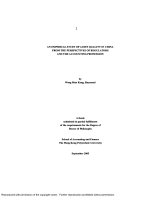Student motivations to study abroad – an empirical study of Vietnamese students in UK
Bạn đang xem bản rút gọn của tài liệu. Xem và tải ngay bản đầy đủ của tài liệu tại đây (574.03 KB, 9 trang )
Nguyen Tran Nguyen Khai. Journal of Science Ho Chi Minh City Open University, 7(4), 103-111 103
STUDENT MOTIVATIONS TO STUDY ABROAD –
AN EMPIRICAL STUDY OF VIETNAMESE STUDENTS IN UK
NGUYEN TRAN NGUYEN KHAI
International University – Vietnam National University HCMC -
(Received: October 02, 2017; Revised: November 27, 2017; Accepted: November 29, 2017)
ABSTRACT
This study adapts Push and Pull Theory in educational tourism to explore and measure factors that make
students studying abroad in addition to considering travel behaviours of them while being in UK. By using the
survey data from 125 Vietnamese students currently studying in United Kingdom. Vietnamese students decide to
study abroad to get a better education than domestic one, improve job prospects as well as have a better
understanding of western countries’ culture. Quality of the course and university is also considered when making
decision. Besides, pull factor related to destination is the last factor affect students’ motivations. When Vietnamese
students study at the host country, they seem to travel frequently and stay longer per trip. Vietnamese students also
prefer hotel/motel than youth hostel in terms of accommodation.
Keywords: International student; Motivations to study abroad; Push and pull theory; Travel behaviours.
1. Introduction
Studying abroad is not a new
phenomenon, especially in higher education
level. In fact, Altbach and Teichler (2001)
argued that the 21st century might be called
the century of education. In the world of
economic globalisation, the need for human
resources which can work effectively in
international environment becomes more
essential (Vaicekauskas et al., 2013).
Organisations hunt for employees who have
linguistics capability (Tremblay 2005) as well
as intercultural skills, international experience
(Daly and Barker, 2005). Studying abroad is
one of the most effective methods for
graduates to equip themselves those skills and
become more employable.
There is no surprise that the number of
students enrolled in tertiary education outside
their countries of origin has witnessed the
sustainable growth since 1975. Over 37 years,
the increase was more than 560%, reached 4.5
million of foreign students in 2012 (Figure 1).
The Organisation for Economic Co-operation
and Development (OECD) countries are
considered as top destinations which have
75% of all foreign students study in (OECD
2014). In addition, EU countries hold the
largest proportion with 48% of foreign
students, followed by North America with
21% and Asia with 18% (ibid). More
specially, US, UK and Germany are top three
countries of destination respectively and the
top six countries which include top three and
France, Australia, Canada occupy more than
50% of the market (OECD, 2014).
On the demand side, with the young
population, fast economic growth and the
value of education in societies, Asia is the
region which has the highest number of
international students studying abroad with
53% of total (OECD 2014). In some particular
host countries, the proportion of Asian
students among international students is
extraordinarily high such as 94% (Japan),
93% (Korea), 82% (Australia), 73% (US), and
70% (New Zealand) (ibid). In country level,
China is leading country of origin of students
studying abroad with 22% of the market.
Table 1 shows the top ten sending countries of
international students enrolled tertiary
education outside their home nation.
104 Nguyen Tran Nguyen Khai. Journal of Science Ho Chi Minh City Open University, 7(4), 103-111
Figure 1. Long-term growth in the number of students enrolled in tertiary education
outside their home countries
Source: OECD (2014, p. 344)
There are five objectives discussed in this
study:
To explore contributing factors students
base on to choose a destination to study.
To identify the relationship between
contributing factors and the satisfaction of
students while studying in UK.
To investigate the future intention of
student after experiencing UK education.
To explain descriptively the travel
behaviours of Vietnamese students.
To discover the differences and
similarities in travel behaviours in terms of
different characteristics such as gender,
marital status.
2. Literature review
Push and Pull concept
“Push and pull” concept has become the
most common tool for educational researchers
to explain the international student choice of
country and institution (Wilkins et al., 2012).
Students tend to study abroad because of the
lack of capacity and opportunities in their
home countries (Altbach, 2004), relatively
lower educational quality, the unavailability
of some particular subjects (Safahieh and
Singh, 2006) as well as social and political
issues (Maringe and Carter, 2007). Bourke
(2000) in his research found that the most
crucial reason that make student wish to study
abroad is enhanced career prospects. The
second significant factor is the chance to meet
new friends and explore new culture. Chen
(2007) supported that idea by suggesting one
of the motivations is that the foreign degree
could improve the job prospect and the chance
to have better salary and promotions.
On the other hand, some of the “pull”
factors discussed frequently in many
researches is likely related to academic and
institutional aspects. For example, among all
of push – pull factors in Chen’s study (2007),
the academic factor which includes criteria
such as the reputation of university/
programme, the quality of university/
programme and the ranking of university/
programme received relatively high scores.
The finding was confirmed again by
Abubakar and his colleagues (2010).
However, with the aim of exploring travel
behaviours, this research is going to focus on
those factors students choose university that
associated with destination. In general, the
impact of country image on purchasing
decision of any products or services has been
investigated in various studies (Javalgi et al.,
2001). In addition, Cubillo et al. (2006)
argued that the city image plays a role as
important as country does in international
students’ decision. In their suggested model, a
destination factor could comprise weather,
cost of living, international environment,
development level, safety and security.
Moreover, there are few more factors
mentioned in other studies that are quite
important, such as opportunity to live in a
diverse culture (Mavondo et al., 2004), host
country experience (Maringe and Carter,
2007) or travel opportunities (Porumbu and
Necsoi, 2013)
Educational tourism – A lucrative
tourism sector
This market is estimated as a multi-billion
dollar business by professionals and
Nguyen Tran Nguyen Khai. Journal of Science Ho Chi Minh City Open University, 7(4), 103-111 105
academics (Chadee and Cutler, 1996).
According to StudentMarketing (2014), the
youth, student and educational travel market
occupy more than 20% of all international
arrivals and create US$ 194 billion in 2012.
School breaks and holidays always offer
university students the time to travel (Mattila
et al., 2001). In detail, with around 20 weeks
of free time for holidays each year and low
rate of full-time employment (Davies and Lea,
1995), university students have few
commitments and high propensity for travel.
There is a common bias that students or youth
travellers have small budget and do not spend
a lot during their trip but actually from the
observation of the industry, they tend to stay
longer, spend more and travel more frequently
than
average
international
tourist
(StudentMarketing, 2014). Additionally, the
market is estimated to reach 300 million
arrivals by 2020 and value US$ 320 billion.
VFR visits to international students – a
significant source should not be neglected
With the nature of international student
staying away from home for long time, their
participation rate in VFR (visiting friends and
relatives) tourism as a host or traveller is
relatively higher among university students
than general population (Chadee and Cutler,
1996, Michael et al., 2004). Michael et al.
(2004) in their study also suggested
considering the lifetime value of tourists since
there is a significant positive relationship
between VFR travel and repeat visitation.
Furthermore, VFR travellers seem to take
their visits in the off-season and lengthening
the period of time at the destination
(Noordewier, 2002; Hu and Morrison, 2002).
3. Methodology
3.1. Questionnaire Design and Data Collection
To test the proposed model and the given
hypotheses, quantitative approach was mainly
applied and a questionnaire survey was used
to collect data. All items in the questionnaire
were set with the Likert Scale’s statement,
basing on the five-point ranging from scale 1
to scale 5, equivalent to “strongly disagree” to
“strongly agree”. The target population is all
Vietnamese students who are pursuing higher
education degree in UK. According to HM
Government (2013), UK welcomed 47,200
international students to study higher
education level from Vietnam, ranked 6th in
top sending countries.
This study applied convenient sampling
technique. The data were collected by two
ways: (1) questionnaires were delivered
directly to the target respondents and (2) the
link of online questionnaire was sent to
respondents through emails. After completing
data collection, there were 125 valid
respondents in total.
3.2. Data Analysis
Firstly, to explore the correlations of
independent and dependent variables and to
examine the reliability and validity of them,
the study conducted Exploratory Factor
Analysis (EFA) and Reliability Test.
Secondly, Multiple Regression were applied
to find out the causal relationships between
independent variables and dependent variable.
Finally, descriptive analysis would be
conducted to have an brief look at the travel
behaviour of Vietnamese students when they
are in UK.
4. Research findings
4.1. Profile of the Sample
In total of 125 collected questionnaires,
there are 44 male students (taking possession
of 35.2%) compared to 81 females (taking
possession of 64.8%). More than 60% of the
respondents are participating in graduate
programs (Master or Doctor degree) and
around 40% is studying bachelor level or
lower. When being asked whether students are
having part-time job while studying, 49
respondents said yes which means the
majority (60%) completely focus on studying.
This confirms previous researches about the
potential of the international student market in
tourism. With low rate of employment,
especially full-time employment, international
students have few commitments and high
propensity for travel.
106 Nguyen Tran Nguyen Khai. Journal of Science Ho Chi Minh City Open University, 7(4), 103-111
In addition, respondents come from
various universities throughout the UK. In
detailed, there are opinions from 29 different
universities from North to South of the
country.
4.2. Factor Analysis and Reliability
The factor analyses (EFA) were
conducted with Kaiser-Meyer-Olkin and
Barltlett’s test of sphericity and Varimax
Rotation of 24 items of independent variables.
The research collected the results of the
KMO measure of sampling adequacy for
independent variables (KMO=.914). It was
higher than the minimum value for a good
factor analysis .60. Furthermore, Barltlett’s
test of sphericity was significant (Sig.=.000),
demonstrating the sufficient correlation
between the variables.
From the result shown in table 1, all
independent variables were divided into 5
different components, including Social
Adaption, Destination Pull Factor, Course
Quality, Push Factor, Study Support. Factor
loadings of remained items were from .433 to
.848, all of which were acceptable because of
being higher than the level of minimum
requirement at .40 (Hair et al., 2006). In
addition, Cronbach’s coefficient alpha value
above .60 was proved to be acceptable by
Pallant (2007), as a result, Cronbach’s
coefficient alpha values of all factors in the
research were accepted.
Table 1
Factor Analysis and Reliability test
Factors/variables
Factor loadings
1
2
3
Factor 1: Social adaptation
The diversity of the city where my university is located
.738
Range of student clubs and societies
.718
Part-time employment while studying
.656
Intention to migrate
.604
Chance to travel
.572
Make new international friends
.527
The international student support service is helpful
.499
There is no discrimination against me at this university
.465
Factor 2: Destination pull factor
Comfortable climate
.832
Quiet- studious environment
.788
Lifestyle of the country/ city
.633
Exciting place to live
.522
Relatively lower cost to pursue the degree
.433
Factor 3: Course quality
The quality of the program
.848
The quality of the university
.837
Qualifications recognised worldwide
.536
4
5
Nguyen Tran Nguyen Khai. Journal of Science Ho Chi Minh City Open University, 7(4), 103-111 107
Factors/variables
Factor loadings
1
2
3
4
5
Factor 4: Push Factor
Overseas course is better than local
.811
Improves job prospects/ chance of receiving a good salary
and promotions
.656
Chance to get better understanding of Western countries
.597
Improve language skills
.568
Factor 5: Study support
My profession requires an advanced degree
.639
Safe (low crime) environment
.592
General facilities at school - buildings and equipment
.570
Cronbach’s Alpha
.842
.811
.835
.809
.641
Eigenvalues
4.06
3.11
2.80
2.61
2.13
Explained Variance (%)
17.65 13.51 12.17 11.37 9.26
Cumulative (%)
17.65 31.17 43.33 54.70 63.96
4.3. Factors affecting Dependent variable
Pearson’s Correlation Analysis and
Linear Regression Analysis were conducted
three times to explore the relationships
between independent and dependent variables,
independent and mediating variables,
mediating and dependent variables.
Basing on the data’s result, it showed that
three out of five independent variables are
correlated with the dependent variable –
Overall Satisfaction. The Push Factor seems
to have most impact to the overall satisfaction
with r=.357; p<.001, followed by Course
Quality r=.326; p<.001), and Destination Pull
Factor r=.167; p<.001.
Figure 2. Causal relationship result
4.4. Student travel behaviours
Past travel experience
When be asked for the number of
holidays in UK in the last 12 months, only six
students (less than 5%) reported they have not
travelled yet. On the other hand, 30% of the
sample said that they travelled more than 6
times. It means that roughly they have at least
108 Nguyen Tran Nguyen Khai. Journal of Science Ho Chi Minh City Open University, 7(4), 103-111
one trip in every two months.
Type of accommodation
Regarding
to
which
kind
of
accommodation that students usually use
when travelling, 74 respondents indicated that
they stayed in hotel or motel, 53 respondents
would stay in Friend/ Relatives’ houses, the
same amount of respondents also stayed in
Backpacker, Youth hostel, and only five
respondents would stay in Camp site. The
result may contradict with the common sense
that students generally seek to cheap
accommodation (WYSE 2010). However, it is
similar to what Huang and Tian (2013) found
when they studied about Chinese students in
UK. There are several possible reasons for
why Hotel/ motel is the most popular choice
although Field (1999) indicated that students
are more likely to stay at friends and relatives’
houses. Firstly, Vietnam is very far away from
UK and there are few students have relatives
and friends in Britain. Secondly, B&B
accommodation and camp site are types of
accommodation which are not popular in
Vietnam.
Mode of transportation
When being asked about mode of
transportation students often use, Bus/coach
(88 respondents) and train (79 respondents)
are chosen the most and just only few students
used to use rental car, motorcycle or taxi as
their main mode of transportation when
travelling. It is understandable while the
public transportation in UK is well-developed
and it is also convenient and relatively
cheaper to travel across cities with this means
of transportation. The rental car and
motorcycle are not popular might due to the
different side when driving between UK and
Vietnam and there are not many Vietnamese
young people who can drive car.
Size of travel group
The result when asking how many people
respondent usually go with reveals that students
seem do not want to travel alone. However, the
big group is also not a preferred choice when
only 4 respondents reported to go with a group
larger than 6 people. 79 respondents indicated to
go with 1-3 other people and 38 of them would
go with 4-6 people. One possible factor might
account for such finding is that it is fairly
difficult to find accommodation to big group
when travelling. Since majority prefer hoteltype accommodation, a room for a group of 2-4
traveller is easy to seek.
Eating preference
84% of respondent reported that they
chose local home-style cuisine to try when
travelling. 48% of them indicated fast-food
restaurant as one of the options, followed by
deli (24.8%), self-prepared meal (24%) and
prestigious restaurant (16%).
Table 2
Travel behaviours
Categories
Past travel experience
Not yet
1-2 times
3-4 times
5-6 times
>6 times
Frequency
6
31
31
19
38
Categories
Transportation
Rental car
Bus/ Coach
Train
Aeroplane
Motorcycle
Taxi
Frequency
16
88
79
53
9
13
Nguyen Tran Nguyen Khai. Journal of Science Ho Chi Minh City Open University, 7(4), 103-111 109
Categories
Length of trip
One-day trip
1-2 nights
3-4 nights
5-6 nights
>6 nights
Accommodation
Hotel/Motel
Backpacker, Youth Hostel
B&B Accommodation
Friends/ Relatives’ houses
Camp site
Frequency
18
37
49
12
9
74
53
27
53
5
5. Conclusions and limitations
With the large amount of Vietnamese
international students currently studying in the
UK (HM Government 2013), this study
critically explores the motivation factors of
Vietnamese students in deciding the
university to study abroad and investigate
their travel behaviours during the time being
in UK.
Firstly, there are three factors, destination
pull factor (5 items), course quality (3 items)
and push factor (4 items) were confirmed
significantly have a positive relationship with
the overall satisfaction (3 items). The social
adaptation (8 items) and study support (3
items) were rejected to affect the outcome.
Many students would like to recommend their
friends and relatives to study in the
country/university (68% of respondents) or
even travel to the city/country that they are
living (73.6%) of the respondents. In addition,
55.2% of the sample reported that they would
like to come back to UK in the future after
graduation. This could be a hint to the
increasing of Vietnamese tourists in UK;
therefore, any businesses in tourism and
hospitality industry should prepare strategy to
attract potential customers from this nation.
On the other side, 57.6% of students indicated
that they made the decision of selecting
Categories
Frequency
Size of travel group
Alone
1-3 people
4-6 people
>6 people
4
79
38
4
Eating preference
Fast-food restaurant
Home-style restaurant
Prestigious restaurant
Self-prepared meal
Deli
60
105
20
30
31
university to study abroad by themselves.
University manager could base on this finding
to reshape their marketing plan to approach
the student better.
Moreover, in the last two decades, thanks
to the increasing of internationalisation of
education, both tourism and education
industries are getting closer and witness the
great growth rate (Lam et al., 2011). This
research not only contributes to the academic
literature but also provides crucial findings for
both educational institution manager and
organisations in tourism and hospitality
industry. The understanding of motivations to
study abroad and who influence the decision
would help university to attract more students
in the lucrative market. On the other hand,
knowledge about travel behaviours would
support tour operators or hospitality
organisations to serve their potential
customers better.
When considering the place to study
abroad,
Vietnamese
students
choose
universities in UK mostly because the quality
of the program as well as the university.
Students believes that with a qualification that
recognised worldwide, they can improve job
prospects/ chance of receiving better salary
and promotions. Besides, Vietnamese students
in the sample have a willingness to gain
110 Nguyen Tran Nguyen Khai. Journal of Science Ho Chi Minh City Open University, 7(4), 103-111
understanding of Western countries and like
other Asian students, they believe overseas
course is better than domestic one. Improving
language skill is also one of the reasons that
push students to study abroad. Moreover,
factors related to destination such as climate,
environment, lifestyle and living cost are
considered when making decision. Therefore,
envisioning a bright future after graduation by
introducing successful alumni stories or their
reviews about the course could attract more
prospective students. In addition, an
introduction of the destination which is both
rich cultures, exciting to live and suitable to
study with cost advantage would gain
impression from future students. The public
educational fair or workshops in high school
and university in Vietnam that targets directly
to students could be a suitable approach since
students reported they made the studying
abroad decisions by themselves.
Tour operators should pay more attention
to this lucrative market since most of
respondents (95.2%) have travelled last year;
even 30% of them had more than 6 holidays
per year. In addition, the fact that majority
would come back to the country after
graduation turns this market more beneficial
not only at the moment but also in the future.
Therefore,
the
attractive
promotions
exclusively for students and strategy to
maintain relationship with those who used to
travel are some of the must-have tactics of any
tourism organisations. In addition, the eating
preferences of Vietnamese students imply that
local home-style restaurants have competitive
advantage against chain fast-food restaurant.
The business owners of that kind of restaurant
should have more promotions to appeal
students.
Due to the difficulties in approaching
target population which is Vietnamese
students living in UK, the sample size of the
study is quite small. Therefore, it will be
difficult to generalize to the whole population.
There is a recommendation that future
research can use result from the study and
conduct in the larger scale to ensure a
representative distribution of the population.
Besides, the objective of this study is to
collect opinions of students from all level of
higher education included doctorate degree.
However, it was challenging to find many
PhD students to diversify the answers
References
Abubakar, B., Shanka, T. and Muuka, G. N. (2010). Tertiary Education: An Investigation of Location Selection
Criteria and Preferences by International Students- The Case of Two Australian Universities. Journal of
Marketing for Higher Education, 20(1), 49-68.
Altbach, P. G. (2004). Higher Education Crosses Borders. Change, 36(2), 18-24.
Altbach, P., & Teichler, U. (2001). Internationalization and Exchanges in a Globalized University. Journal Of
Studies In International Education, 5(1), 5-25.
Bourke, A. (2000). A Model of the Determinants of International Trade in Higher Education. Service Industries
Journal, 20(1), 110-138.
Chadee, D. D. and Cutler, J. (1996). Insights into international travel by students. Journal of Travel Research, 35(2), 75.
Chen, L.-H. (2007). East-Asian Students' Choice of Canadian Graduate Schools. International Journal of
Educational Advancement, 7(4), 271-306.
Cubillo, J. M., Sanchez, J. and Cervino, J. (2006). International Students Decision-Making Process. International
Journal of Educational Management, 20(2), 101-115.
Daly, A., & Barker, M. (2005). Australian and New Zealand University Students’ Participation in International
Exchange Programs. Journal Of Studies In International Education, 9(1), 26-41.
Davies, E., & Lea, S. (1995). Student attitudes to student debt. Journal of Economic Psychology, 16(4), 663-679.
Nguyen Tran Nguyen Khai. Journal of Science Ho Chi Minh City Open University, 7(4), 103-111 111
Field, A. M. (1999). The College Student Market Segment: A Comparative Study of Travel Behaviors of
International and Domestic Students at a Southeastern University. Journal of Travel Research, 37(4), 375.
HM Government (2013). International Education – Global Growth and Prosperity: An Accompanying Analytical
Narrative. London: Department for Business, Innovation and Skills.
Hu, B., & Morrison, A. (2002). Tripography: Can destination use patterns enhance understanding of the VFR
market?. Journal of Vacation Marketing, 8(3), 201-220.
Huang, R. and Tian, X. (2013). An investigation of travel behavior of Chinese international students in the
UK. Journal of China Tourism Research, 9(3), 277-291.
Javalgi, R. G., Cutler, B. D. and Winans, W. A. (2001). At your service! Does country of origin research apply to
services? Journal of Services Marketing, 15(6/7), 565.
Lam, J. M. S., Ariffin, A. A. M. and Ahmad, A. H. (2011). Edutourism: Exploring the push – pull factors in
selecting a university. International Journal of Business & Society, 12(1), 63-78.
Tremblay, M., Bourbonnais, R., Viens, C., Vezina, M., Durand, P., & Rochette, L. (2005). Improving the
psychosocial work environment. Journal Of Advanced Nursing, 49(6), 655-664.
Maringe, F. and Carter, S. (2007). International Students' Motivations for Studying in UK HE: Insights into the
Choice and Decision Making of African Students. International Journal of Educational Management, 21(6),
459-475.
Mattila, A., Apostolopoulos, Y., Sonmez, S., Yu, L., & Sasidharan, V. (2001). The Impact of Gender and Religion
on College Students’ Spring Break Behavior. Journal of Travel Research, 40(2), 193-200.
Mavondo, F. T., Tsarenko, Y. and Gabbott, M. (2004). International and Local Student Satisfaction: Resources and
Capabilities Perspective. Journal of Marketing for Higher Education, 14(1), 41-60.
Michael, I., Armstrong, A., & King, B. (2004). The travel behaviour of international students: The relationship
between studying abroad and their choice of tourist destinations. Journal Of Vacation Marketing, 10(1), 57-66.
Noordewier T. (2002). 2001 National Survey of the Vermont Visitor: An Examination of the Visiting Friends and
Relatives’ (VFR) Traveller. School of Business Administration and Vermont Tourism Data Centre, School of
Natural Resources, University of Vermont: Burlington, VT.
OECD (2012). Education at a Glance 2012: OECD Indicators [Online], OECD Publishing. Retrieved from
/>OECD (2013). Education at a Glance 2013: OECD Indicators [Online], OECD Publishing. Retrived from
/>OECD (2014). Education at a Glance 2014: OECD Indicators [Online], OECD Publishing. Retrieved from
/>Porumbu, D., & Necşoi, D. (2013). Relationship between Parental Involvement/Attitude and Children's School
Achievements. Procedia - Social And Behavioral Sciences, 76, 706-710. />Safahieh, H., & Singh, D. (2006). Information needs of international students at a Malaysian University. In C.
Khoo, D. Singh, & A. S. Chaudhry (Eds.), Proceedings of the Asia-Pacific Conference on Library &
Information Education & Practice 2006 (A-LIEP 2006) (pp.479-485). Singapore: School of Communication &
Information, Nanyang Technological University.
Vaicekauskas, T., Duoba, K. and Kumpikaite-Valiuniene, V. (2013). The role of international mobility in students’
core competences development. Economics & Management, 18(4), 847-856.
Wilkins, S., Balakrishnan, M. S. and Huisman, J. (2012). Student Choice in Higher Education: Motivations for
Choosing to Study at an International Branch Campus. Journal of Studies in International Education, 16(5),
413-433.
WYSE Travel Confederation (2010): Youth travel industry monitor: 2009 summary report. Amsterdam: WYSE.
Xu, F., Morgan, M. and Song, P. (2009). Students' travel behaviour: a cross-cultural comparison of UK and
China. International Journal of Tourism Research, 11(3), 255-268.
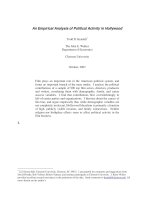
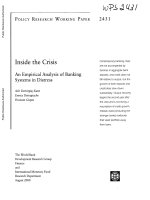
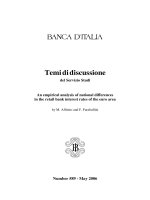

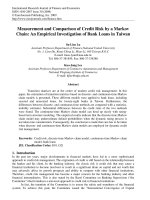

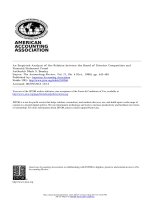
![chung - 2004 - selective mandatory auditor rotation and audit quality - an empirical investigation of auditor designation policy in korea [mar]](https://media.store123doc.com/images/document/2015_01/06/medium_bpj1420548143.jpg)
